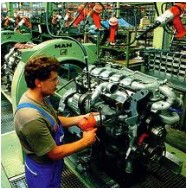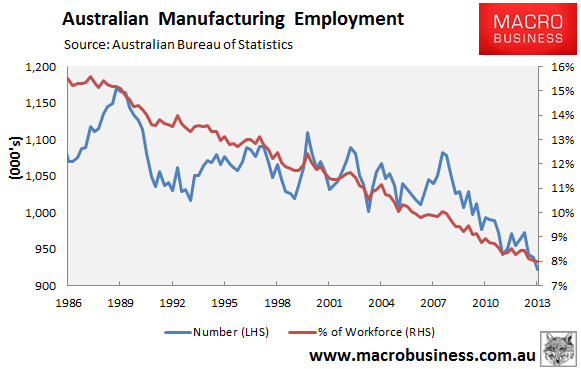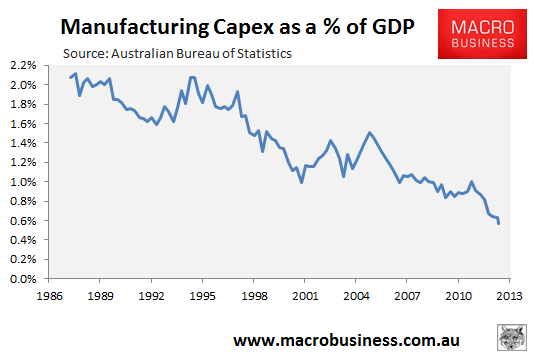
The Australian has published an article today citing a new Government-commissioned survey (available here), which found that the overwhelming majority of Australians are tiring of taxpayers supporting the manufacturing industry. Two-thirds also believed that the industry is in terminal decline, with only 37% of respondents believing Australia can compete globally.
However, the survey, which polled 1,503 Australians and hosted 10 focus groups, also found that 90% of Australians also felt the manufacturing sector was important, especially in providing jobs, with the majority of respondents overstating the manufacturing sector’s contribution to the national economy by as much as three to four times.
The survey does pose the question of whether Australian manufacturing, in its current form, is in terminal decline. Certainly, a quick examination of the quarterly employment data released by the ABS shows an industry in contraction, with the total number of people employed in manufacturing and the industry’s employment share falling sharply over the past 30-years (see next chart).

Manufacturing capital expenditures (capex) has also tanked, falling from 2.1% of GDP in 1987 to only 0.6% of GDP as at June 2013 – an all-time low (see next chart).

But perhaps the biggest indicator of Australian manufacturing’s demise is the below admission by Holden that Australian made cars are too expensive to sell overseas and require ongoing assistance to ensure that local production continues:
General Motors Holden has rejected as unrealistic a demand by the Abbott government that it increase exports in return for more subsidies.
Senior government sources say the car maker has told the government directly and through back channels that Australian-made cars are too expensive to sell overseas, especially given that General Motors is producing similar cars based on a global-platform in other countries as well.
To be fair to Holden, the global automotive industry is suffering from substantial overcapacity, with KPMG’s 2012 Global Automotive Survey forecasting that global industry would be 20% to 30% over capacity in 2016.
Let’s recall, however, that Holden was a successful exporter before the mining boom. A lower dollar would probably make it so again.
Like it or not, the manufacturing industry – and the car industry in particular – is still too big to be euthanized, particularly as Australia’s job market is likely to come under intense pressure as the mining investment boom unwinds.
If Holden, for example, was to pull the pin on local operations, it would render Australia’s car component makers unviable due to lack of scale. Chances are that Toyota would ten follow suit, ending car production in Australia and threatening around 50,000 manufacturing jobs nationally.
The manufacturing industry, therefore, presents a classic catch-22 situation for the Government.
Assuming the Government does agree to continue subsidising local industry, keeping it going for a few more years, we are very likely to return to this position down the track, with the taxpayer again being called upon for support.
The Government is therefore likely to play hard ball with the industry for a while, before capitulating for risk of being seen to have caused the loss of many thousands of jobs.

